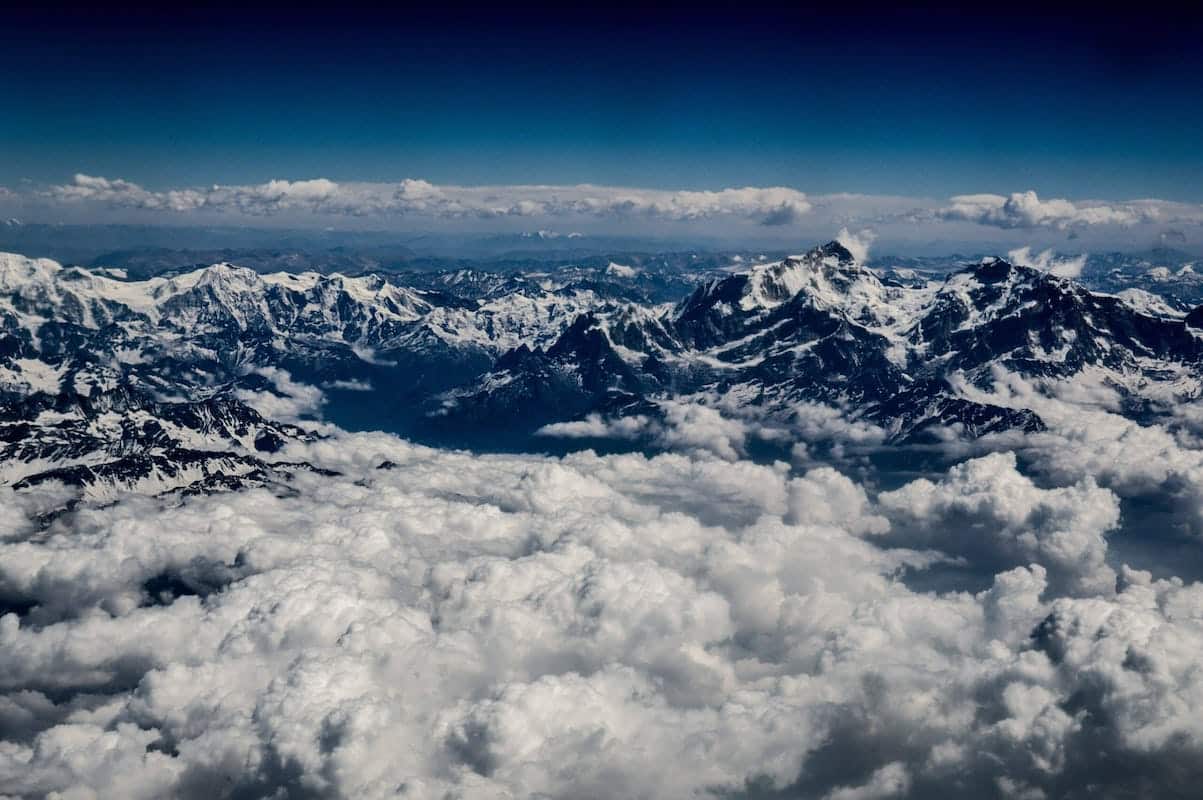Not so Poles Apart: The Arctic and the Third Pole in Asia

A view of the Himalayan mountains in Ghandruk, a village in Nepal. Photo: Marie Martin
With ‘Asia in the Future of the Arctic’ as its core angle, The Arctic Circle Japan Forum is now only a week away. What does it mean for Asia to be in the Arctic – and for the Arctic to be in Asia?
A warming world
The Arctic is warming at a rate of three to four times the international average and academics and other professionals are increasingly concerned about the psychological impacts of climate change. Over the next several decades, both the immediate and indirect psychological impacts of a changing climate – including increases in anxiety, depression, PTSD and suicide rates – are expected to intensify in vulnerable populations including Indigenous communities. Scientists project that a warming climate will also lead to a heightened risk of infectious disease transmission including pandemics (which are already known to disproportionately affect Indigenous communities).
The Third Pole in Asia
Climate change is often associated with the polar regions. However, the changing Arctic and the Third Pole in Asia share important environmental and sociocultural features – including rapidly melting glaciers, thawing permafrost, an increased risk of water and food insecurity and the presence of sizeable Indigenous populations (see e.g. the Arctic Institute’s 2021 Permafrost Series). The Third Pole is home to thousands of glaciers and the largest reserve of freshwater outside the polar regions. The Himalayan mountain range is in this area which impacts approximately 2 billion people (or approximately 25% of the world’s population) – hence the urgency of enhanced discourse connecting local and Indigenous communities in the Arctic and Asia.
Immediate and indirect impacts of climate change
Solastalgia – ‘the pain or sickness caused by the loss or lack of solace and the sense of isolation connected to the present state of one’s home and territory’ – was introduced by philosopher Glenn Albrecht and colleagues in a 2005 paper. In terms of climate change, Indigenous peoples are experiencing its impacts on psychological well-being ‘most acutely’ and are especially likely to experience solastalgia alongside – as seen in the Arctic – worsened food and housing security. While solastalgia (also defined as ‘the distress caused by environmental change’) may be an immediate psychological response, a changing environment’s secondary and tertiary effects also require consideration.
Climate change negatively impacts food, water and energy security and although counterintuitive, ice sheet melt in Greenland and Antarctica results in some sea level drops locally and rise elsewhere due to water travelling ‘towards faraway coastlines’ including in the mid- and lower latitudes. Four in 10 of the world’s population ‘live within 100 kilometres of the coast’, many of whom live in Asian countries. Sea-level rise is expected to pose serious threats to food security in countries like Bangladesh and Vietnam.
A 2022 study concluded that climate change will lead to an increased risk of viral transmission. Implications of such transmissions necessitate inquiries through various prisms, including a psychological one. Many studies have investigated the ways in which Covid-19 has impacted individuals and some argue that the psychological toll could ‘last a generation’.
Communities in conversation
As noted above, Indigenous peoples are more susceptible to conditions such as illness, poverty and poor housing conditions compared to their non-Indigenous counterparts. Olson, who works as a health worker in Greenland (where the vast majority of the population are Inuit), calls on residents to start conversations with other Arctic countries to ‘find answers together’. A similar conclusion on the value of discourse and solidarity was reached in a community in the Canadian North. It would be valuable to consider mechanisms through which Indigenous peoples in the Arctic and Asia could explore common existing and anticipated challenges and responses. Conferences and seminars can facilitate academics and other professionals at any stage of their careers, and short-term programmes including international exchanges, field schools and internships can be instrumental in developing the talents of younger generations. In many cases, however, one’s attendance depends entirely on the availability of grants and scholarships. MOOCs (Massive Open Online Courses), on the other hand, are often free of charge and self-paced – ideal in terms of affordability and accessibility. In addition to official meetings and reports, it is worth exploring less tangible avenues such as the creative arts in both their communicative and therapeutic capacities. Thus inherent to the question of what it means for Asia to be in the Arctic and vice versa is the significance of connecting the many local and Indigenous communities in these regions.
Seira Duncan is an indigenous Eurasian doctoral researcher at the University of Eastern Finland and an International Arctic Science Committee fellow.